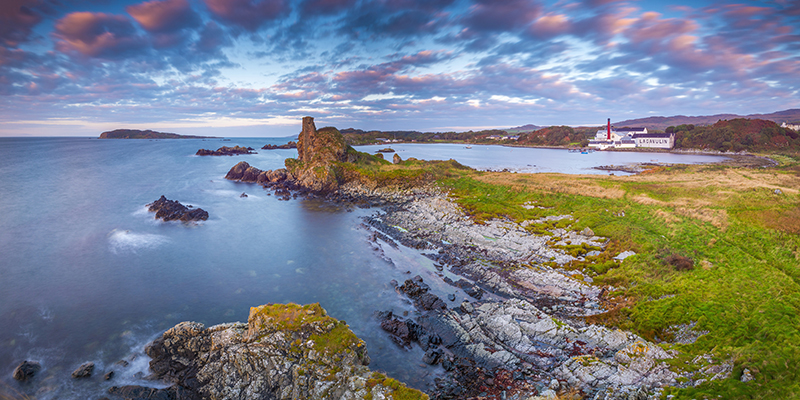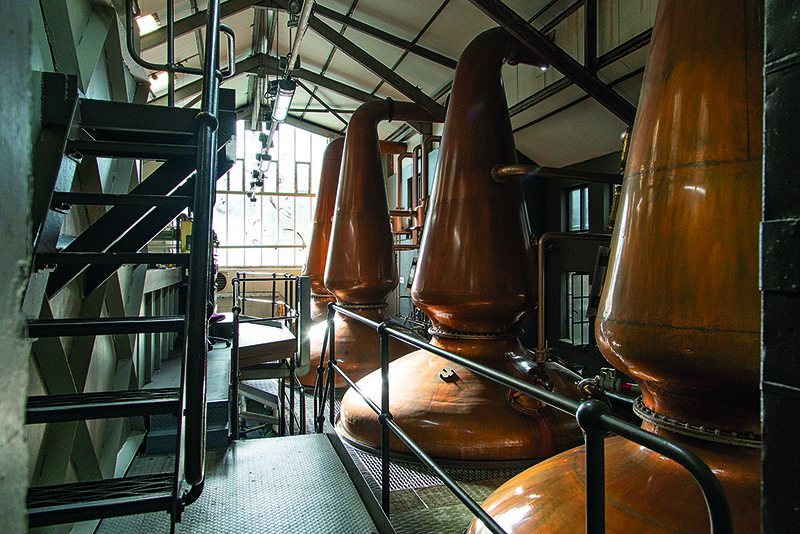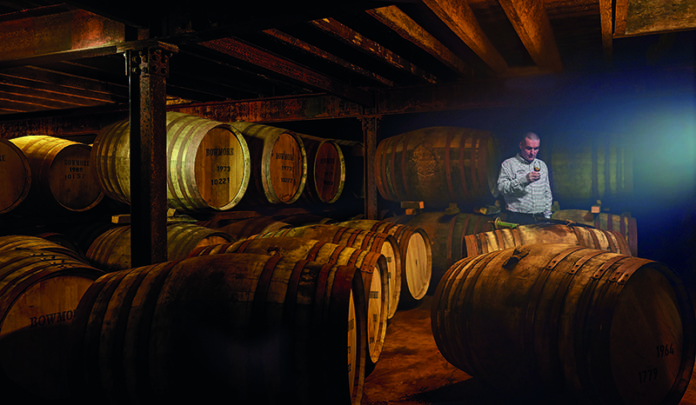Any self-respecting Scotch whisky lover should make the pilgrimage to the Hebridean isles of Islay & Jura, with nine single-malt distilleries between them
Even if you’ve never visited Islay, the chances are, if you drink whisky, you’ve probably tried some of its single malts. This whisky island, off the west coast of Scotland, is responsible for around a quarter of the whisky produced and exported from Scotland, and while much of it comes proudly branded with the single- malt stamp of one of its eight distilleries, much more appears in blended whiskies across the globe.
Though the origins of whisky-making in Scotland are hazy – not helped by the fact that illegal stills operated here for centuries before the taxman got wind of them and they had to get proper licences – it’s likely that it began here in Islay. It is thought that Irish monks may have brought whisky to Scotland, and with Islay being the most southerly isle of the Hebrides – just 20 miles across the Irish Sea from Antrim – and by far its most fertile, there’s a good chance they came here first.
Whether it began here or not, Islay distillers proved their staying power in the 19th century when saturation of the market and huge competition led to the closures of many distilleries across Scotland. On Islay, though several distilleries closed, many survived.

So how is single-malt Scotch whisky made, you may ask? And how does it differ from Irish whiskey (apart from the spelling)? In truth, before it is distilled, all whisky is beer. There are three main ingredients that go into making whisky: barley (which must be ‘malted’, or dried out to release starch, which is turned into sugar), yeast and water. Each and every distillery in Scotland will tell you that their water source is essential to the whisky that they produce. On Islay, there is no shortage of natural water sources – burns and streams that more often than not tumble down from the hillsides, through the peat-rich land.
Laphroaig, one of the island’s most famous whisky distilleries, is so protective of its water source, the Kilbride Stream, that in 1907 it fought a lengthy court battle after the managers of the neighbouring distillery of Lagavulin diverted the stream to their distillery.

Much of the flavour of whisky actually comes from the malting, and Islay’s reputation for producing peaty, smoky whiskies harks back to a time when the island’s infinite peat resources were used to dry out the malt.
Although today the island has other heat resources, most distilleries, including Laphroaig – which has its own malting floor and is renowned for its strong peaty flavour – still use peat in the malting process as the character it gives the whisky has proven popular.
Once malted, the barley is added to a mash tun where water is added in three stages (each time a little hotter) to release as many sugars as possible. From here it is cooled and added to a wash back, where the yeast is added. It is this fermentation stage that essentially turns the barley and water into beer.
 After that, whisky-making is all about the distilling process – boiling and condensing the liquid in copper stills to separate the desirable and undesirable elements and produce a safe alcohol by volume (ABV) level. Once a spirit has been distilled, it goes into a cask for maturing. There are five categories of Scotch whisky with varying guidelines, but for a spirit to be labelled single malt Scotch it must contain water and malted barley only (no other cereals), be aged for a minimum of three years, and since 2012 it must also be bottled in Scotland. The main difference between Scotch and Irish whiskey is that the former is distilled twice, while Irish whiskey is normally distilled three times to produce a lighter finish.
After that, whisky-making is all about the distilling process – boiling and condensing the liquid in copper stills to separate the desirable and undesirable elements and produce a safe alcohol by volume (ABV) level. Once a spirit has been distilled, it goes into a cask for maturing. There are five categories of Scotch whisky with varying guidelines, but for a spirit to be labelled single malt Scotch it must contain water and malted barley only (no other cereals), be aged for a minimum of three years, and since 2012 it must also be bottled in Scotland. The main difference between Scotch and Irish whiskey is that the former is distilled twice, while Irish whiskey is normally distilled three times to produce a lighter finish.
To read the full article and more on British heritage, pick up a copy of Made in Britain.






 © 2024
© 2024